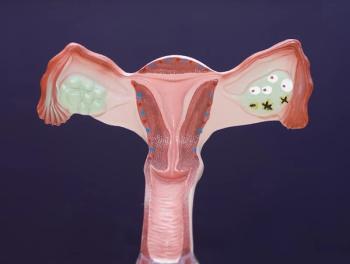
FDA Approves Niraparib for Recurrent Ovarian Cancer
The FDA announced the approval of niraparib, an oral PARP inhibitor, for the treatment of recurrent epithelial ovarian, fallopian tube, or primary peritoneal cancer.
The US Food and Drug Administration (FDA) announced the approval of niraparib (Zejula, Tesaro, Inc), an oral poly(ADP-ribose) polymerase (PARP) inhibitor, for the treatment of recurrent epithelial ovarian, fallopian tube, or primary peritoneal cancer that are in complete or partial response to platinum-based chemotherapy.
The approval,
The trial included 553 patients who had received at least two prior treatments of platinum-based chemotherapy and had achieved a complete or partial response; they were randomized 2:1 to either niraparib or matched placebo, and were assigned to one of two cohorts based on presence of deleterious or suspected deleterious germline BRCA mutations (203 patients).
The study drug showed significant improvements in progression-free survival (PFS) regardless of the presence or absence of those mutations. In the cohort with a BRCA mutation, the median PFS with niraparib was 21 months, compared with 5.5 months with placebo, for a hazard ratio (HR) of 0.27 (95% CI, 0.17–0.41; P < .001). In the cohort with no BRCA mutations, the median PFS was 9.3 months with niraparib and 3.9 months with placebo, for an HR of 0.45 (95% CI, 0.34–0.61; P < .001).
The most common adverse events with niraparib included thrombocytopenia, anemia, neutropenia, nausea, and several others occurring in at least 10% of patients. Grade 3 or 4 hypertension was seen in 9% of niraparib patients, compared with 2% of those receiving placebo.
The authors of the NEJM paper noted that while BRCA mutation status may offer information on the magnitude of treatment benefit, it is not sufficiently precise as a biomarker to guide therapy with niraparib. The FDA approval does not specify based on mutation status.
The developer of niraparib noted in a press release that research into this agent is now expanding into other potential indications. “We plan to expand our first-line ovarian cancer strategy to include a combination study that assesses the potential benefit of niraparib plus an anti–PD-1 antibody in the maintenance setting and initiate a clinical study of niraparib in combination with bevacizumab in patients with a first recurrence of ovarian cancer, with an intent to replace chemotherapy in this setting,” said Tesaro President and COO Mary Lynne Hedley, PhD. There are also ongoing studies testing niraparib in breast cancer and non–small-cell lung cancer.
Newsletter
Stay up to date on recent advances in the multidisciplinary approach to cancer.





















































































